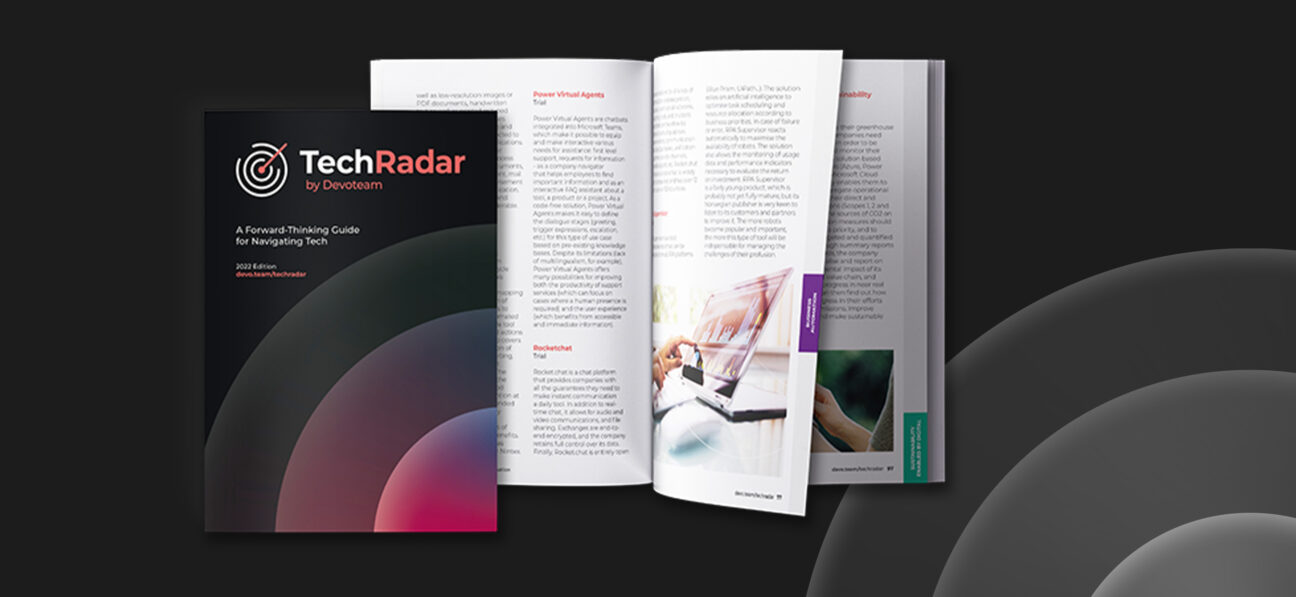Cloud Computing has transformed how we work and interact with information and technology – from the way we deploy and maintain applications to development practices. However, while Cloud Computing has unlocked the ability to develop highly efficient and scalable architectures, it has also opened the door for greater complexity – and a higher chance of error – for developers who need to manually maintain resources across multiple providers.
Arguably one of the most popular cloud application development solutions available today, Terraform eliminates the complexity of managing resources in multi-cloud and hybrid environments by enabling developers to define, build and manage infrastructure in code.
In this article, we’ll take a closer look at the technology behind the Saas solution and the capabilities and use cases that distinguish Terraform as a leader in cloud application development.
What is Terraform?
Developed and released in 2014 by HashiCorp, a cloud computing software company, Terraform is an open source infrastructure-as-code (IaC) software used to automate the provisioning of cloud resources across multiple public cloud providers like AWS, Microsoft Azure, Google Cloud, or on-prem in private clouds such as OpenStack, VMWare vSphere, or CloudStack.
Terraform essentially allows DevOps engineers to define resources in human-readable configuration files using a configuration language called HCL (HashiCorp Configuration Language) that they can version, reuse, and share. Users can then use a consistent workflow to provision and manage all infrastructure throughout its lifecycle.
Where did Terraform come from?
Terraform was developed and released by HashiCorp, a cloud computing software company founded in 2012 by Mitchell Hashimoto and headquartered in San Francisco, California.
Since its release in 2014, Terraform quickly emerged as a strong contender in the world of cloud development, rivaling long-standing infrastructure configuration management tools like Ansible, Chef, and Puppet.
Similar to other products offered by HashiCorp, such as Consul, Vault, or Waypoint, Terraform’s source code is freely available under an open-source license and can be downloaded from the Terraform website and Github.
How does Terraform work?
In order to understand how Terraform works, we first need to look at the two essential components that comprise the technology: Terraform core and providers.
- Terraform Core is designed for lifecycle management of infrastructure and functions using two input sources. The first is source input configured by the user into Terraform defining the resources that need to be created or provisioned.
The second input source stems from data feeds about the current infrastructure setup. Using these two inputs, Terraform compares the user-specified desired state with the current state, then communicates with plugins through Remote Procedure Call (RPC) to configure the architecture needed to fully provision the desired infrastructure.
- Terraform Providers essentially act as intermediaries between the user’s system and specific technologies, and grants access to the resources of cloud providers, other infrastructures, as well as platform-as-a-service (PaaS) tools like Kubernetes. As a result, users are able to create infrastructure on different levels, such as stacking Kubernetes on top of Azure.
Today, HashiCorp and the Terraform community have written more than 1700 providers (and counting) to manage thousands of different types of resources and services.
What are the best-known use cases for Terraform?
Terraform’s use cases are numerous and continue to evolve through the continued development of both the HashiCorp team and the Terraform community of contributors. For now, we’ll take a closer look at 4 key use cases companies should keep in mind when considering deploying Terraform:
- Using Multiple Clouds
As organizations increasingly move to cloud, they must contend with a number of challenges that can adversely affect productivity, compliance, and scalability. While provisioning infrastructure across multiple clouds can help resolve these challenges, multi-cloud deployments also add a layer of complexity because each provider utilizes its own interfaces, tools, and workflows.
This is where Terraform shines. Terraform allows users to utilize the same workflow to manage multiple providers, deploy applications on different clouds, and handle cross-cloud dependencies. As a result, large-scale, multi-cloud infrastructures can be managed and orchestrated more easily and effectively.
- Build and Dispose Environments
Terraform greatly accelerates the implementation of all software development phases: development, testing, staging, and production – by enabling users to save infrastructure resources and their dependencies as code in a specified environment. With these configurations, it’s possible to quickly spin up new environments for testing and then dispose of them easily.
In a similar vein, developers can use the same concept to create a recovery plan in the event the system is compromised by natural disasters such as fire or flood, allowing the system to be brought back online in the shortest time possible.
- Multi-Tier Application Deployments
Terraform can be used to efficiently deploy, release, scale, and monitor infrastructure for multi-tier applications. N-tier application architecture allows developers to scale application components independently and provides a separation of concerns.
As an example, a web application needs a database tier and a web server tier. Web servers rely on databases for proper operation; they also depend on load balancers to send the requests to different servers without overloading any server. With Terraform, it becomes easier and faster to manage resources in a tier together and automatically implement dependencies correctly. In this case, Terraform will deploy a database tier prior to provisioning the web servers that depend on it.
- Working with Popular PaaS Tools
In order to deploy a modern application, infrastructure provisioning is essential, but that isn’t the only step needed to complete deployment. Other tools are needed to schedule, cache, route, and perform other functions.
For example, Kubernetes is necessary to deploy containers across hardware resources. With Terraform, users can automate the provisioning of Kubernetes (particularly managed Kubernetes clusters on cloud platforms) and automate the deployment of applications into a cluster, and manage the whole system from one tool.
Is Terraform the right IaC tool for your business?
Orchestrating infrastructure across multi-cloud and hybrid environments can be a daunting challenge for DevOps teams. But with Terraform – and the power of infrastructure-as-code – coordinating between different service providers and technologies is easier, less time-consuming, and more cost-efficient.
For businesses looking to provide their DevOps teams with greater flexibility and versatility to effectively build, deploy and manage infrastructure across all environments from a single location – Terraform is the ideal solution.
Take Part in the Devoteam Community
This article is part of a larger series focusing on the technologies and topics found in the first edition of the TechRadar by Devoteam. To see what our community of tech leaders said about the current position of Terraform in the market, take a look at the most recent edition of the TechRadar by Devoteam

Want to know more about HashiCorp Terraform?
Check out TechRadar by Devoteam to see what our experts say about its viability in the market.
